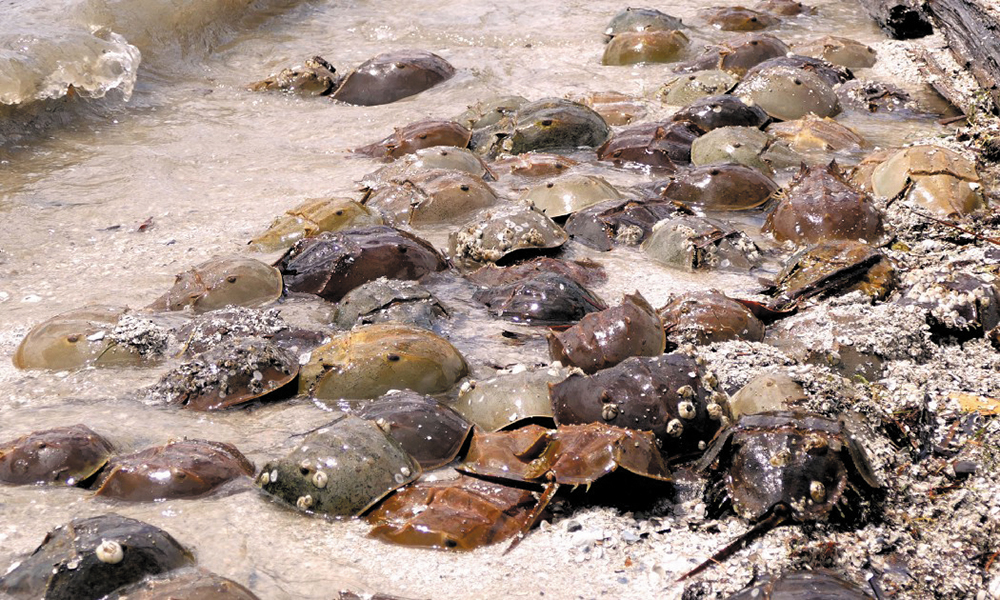Six reasons why horseshoe crabs may be better lovers than you
Although horseshoe crabs live most of their lives unseen deep underwater, these creatures emerge in droves during full and new moons on the shoreline for mating season. Hundreds of thousands of eggs are laid on New Jersey shorelines to ensure this long-lasting species’ existence for future generations.It’s no surprise that through millennia of survival horseshoe crabs have perfected their partnership with their mates.
- Horseshoe crabs are some of the longest living, making them the most experienced species on this planet.
Often called “living fossils,” horseshoe crab ancestors can be traced back through the geologic record to around 445 million years ago, 200 million years before dinosaurs existed.
- Horseshoe crabs have 10 eyes so they see everything.
Despite their hard and tank-like exterior, horseshoe crabs are extremely sensitive creatures, at least towards stimuli like light. These marine arthropods have ten eyes — a pair of compound eyes on their front shell and “photoreceptors” in other areas, primarily along the tail…so you know what that means.
- Not only do they have 10 eyes, but they have 10 legs to handle you best.
Horseshoe crabs are actually not true crabs at all, being more closely related to arachnids (a group that includes spiders and scorpions) than to crustaceans (a group that includes true crabs, lobsters, and shrimp).

Volunteer Steve Dunn/USFWS
- Their Get-Togethers are infamous.
During early summer months, horseshoe crabs come to shore by the droves to bump and grind their way into securing the good of their species for future generations through massive orgies.
- They have way more children. Like overwhelmingly so.
During spawning, the female crab partially buries herself in the sand while she deposits a cluster of about 4,000 tiny green eggs. In an evening of egg laying, a female crab can lay several egg clusters, and she may spawn repeatedly over several nights to lay 100,000 or more eggs.
- Horseshoe crabs are very, very……patient.
During mating season, male horseshoe crabs will wait near beaches for their ladies. Once united, the smaller male crab attaches himself to the top of the larger female’s shell by using his specialized front claws, and together they crawl to the beach. Nicholas Sparks couldn’t write a more romantic ending.












